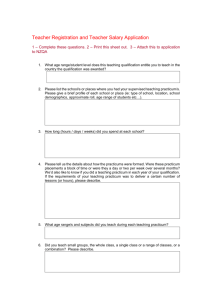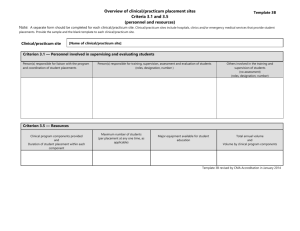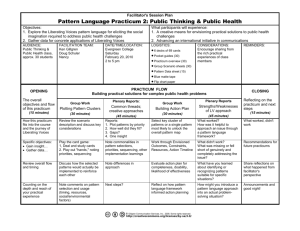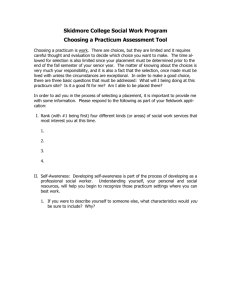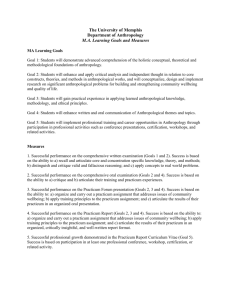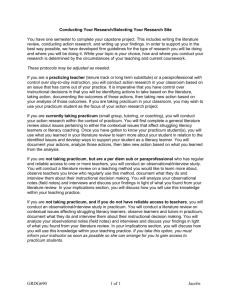Course Syllabus
advertisement
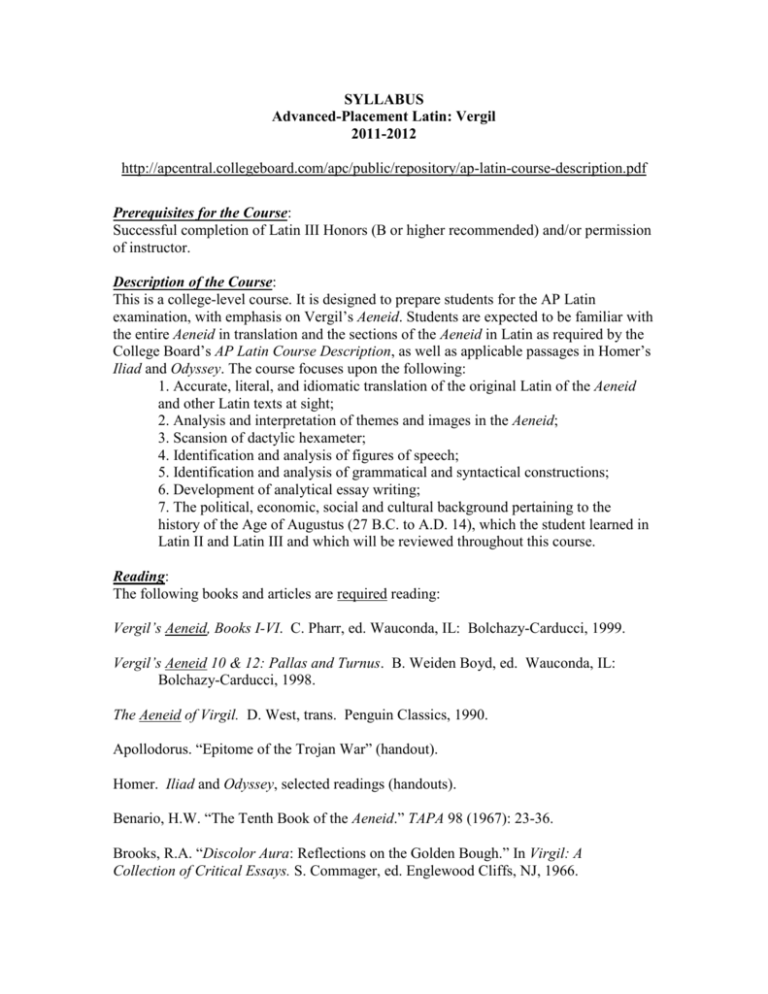
SYLLABUS Advanced-Placement Latin: Vergil 2011-2012 http://apcentral.collegeboard.com/apc/public/repository/ap-latin-course-description.pdf Prerequisites for the Course: Successful completion of Latin III Honors (B or higher recommended) and/or permission of instructor. Description of the Course: This is a college-level course. It is designed to prepare students for the AP Latin examination, with emphasis on Vergil’s Aeneid. Students are expected to be familiar with the entire Aeneid in translation and the sections of the Aeneid in Latin as required by the College Board’s AP Latin Course Description, as well as applicable passages in Homer’s Iliad and Odyssey. The course focuses upon the following: 1. Accurate, literal, and idiomatic translation of the original Latin of the Aeneid and other Latin texts at sight; 2. Analysis and interpretation of themes and images in the Aeneid; 3. Scansion of dactylic hexameter; 4. Identification and analysis of figures of speech; 5. Identification and analysis of grammatical and syntactical constructions; 6. Development of analytical essay writing; 7. The political, economic, social and cultural background pertaining to the history of the Age of Augustus (27 B.C. to A.D. 14), which the student learned in Latin II and Latin III and which will be reviewed throughout this course. Reading: The following books and articles are required reading: Vergil’s Aeneid, Books I-VI. C. Pharr, ed. Wauconda, IL: Bolchazy-Carducci, 1999. Vergil’s Aeneid 10 & 12: Pallas and Turnus. B. Weiden Boyd, ed. Wauconda, IL: Bolchazy-Carducci, 1998. The Aeneid of Virgil. D. West, trans. Penguin Classics, 1990. Apollodorus. “Epitome of the Trojan War” (handout). Homer. Iliad and Odyssey, selected readings (handouts). Benario, H.W. “The Tenth Book of the Aeneid.” TAPA 98 (1967): 23-36. Brooks, R.A. “Discolor Aura: Reflections on the Golden Bough.” In Virgil: A Collection of Critical Essays. S. Commager, ed. Englewood Cliffs, NJ, 1966. Davis, S. “Teaching Students to Write Critical Essays on Latin Poetry.” Classical Journal 85 (1990): 133-38. Horsfall, N. “Virgil.” Dictionary of Literary Biography. Columbia, SC: Buccoli, 1999. Knox, B.M.W. “The Serpent and the Flame: The Imagery of the Second Book of the Aeneid.” American Journal of Philology (1950): 124-142. Newton, F.L. “Recurrent Imagery in Aeneid IV.” TAPA 88 (1957): 31-43. Otis, Brooks. Virgil: A Study in Civilized Poetry. Oxford: Oxford University Press, 1963 (excerpts). Class and Home Work: The majority of this course is spent translating Vergil’s Aeneid from the original Latin. To complete the AP syllabus, we must cover approximately 60-70 lines of the Latin text per week, 15 to 20 lines of the Latin text per class period. Homework assignments therefore mostly consist of a nightly preparation of the next day’s translation. All homework translations should be rendered from Latin into English as literally as possible, i.e., with attention paid to tense, mood, voice, person and number of verbs; case with nouns, adjectives, and pronouns; syntactical constructions, etc. Students should expect to spend a minimum of one-half hour per day on homework. Students are graded on the completion and accuracy of homework assignments. Missing one day of homework can jeopardize the score on the AP exam. All homework is due at the beginning of class. Late homework is not accepted. Approximately once every two weeks the students are required to write a practice essay on the types of prompts seen on the free-response portion of the AP exam, as well as prompts from past exams. One day per week will be devoted to a Practicum, during which we will discuss historical background for or themes in the Aeneid, the makeup of the AP exam, strategies for the exam, scansion of poetry, sight-reading, and the like. Topics for the weekly Practicum are listed in the schedule below. N.B. Students are expected to come to class prepared to read the day’s translation at sight, i.e., without using a written translation, when called upon to do so, in order to ensure that they have worked through the Latin text twice. Using a written translation results in a loss of participation points. The student should also be prepared to explain any grammatical or syntactical structures in the day’s translation, as well as figures of speech or metrical issues. On occasion, students will be assigned to teach the entire day’s passage (15-20 lines) to the rest of the class, including grammar, syntax, figures of speech, metrics, and context. Assessments: 1. Quizzes are given on a regular basis to insure that students are keeping up with the work. A quiz on vocabulary is given every week. Other quizzes are given on grammar, syntax, Roman history, and literal translations of sight passages, to prepare for the multiple-choice portion of the AP Exam. 2. Tests for the course follow the format of the AP exam and occur approximately every 2 weeks. We focus primarily on free-response, translation and essay questions (60% of the AP exam), but we also spend time preparing for the multiple-choice portion of the exam (40%). Students are tested on their knowledge of Vergil’s historical context, the entire content of the Aeneid, figures of speech, scansion, and other authors typically encountered in the multiple-choice portion of the AP exam, including Catullus, Cicero, Horace, Martial, Pliny, and Ovid. Unless otherwise noted, tests cover all lines read up to the date of the test. 3. Sight-Reading of Latin passages chosen by the teacher will take place once each week either as homework or in class, accompanied by questions regarding content, grammar, syntax, and metrics as applicable. Participation: Class participation makes up a considerable portion of the course grade. Students are encouraged to attend every class. Missing classes could jeopardize performance on the AP exam. Students are expected to come to class prepared, having completed all homework assignments. They are expected to participate willingly and appropriately in discussions and in-class translations, whether syllabus-based or sight. A participation grade is given every day. Loss of participation points are made for lack of participation, hindering the learning of others, or inappropriate talking or activity. Grading Scale: The grade breakdown for the course is as follows: Tests Quizzes Homework Participation 75 points 25 points 10 points 5 points SCHEDULE (All weekly lines are read in Latin) August 15-19 Practicum: Introduction to the course and the AP examination Read: Horsfall, “Virgil” Review: Aeneid 1 and 2 in translation Aeneid 1.1-70 August 22-26 Practicum: Review of the history of the Augustan Age (27 B.C.-A.D. 14); Propaganda and Patronage: Augustus, Maecenas, and Vergil Book 1.71-130 Read Otis on Vergilian Subjectivity (handout) Test: Translation August 29-September 2 Practicum: Vergil’s Historical Background and Works Book 1.131-197 September 6-9 Monday: Labor Day Practicum: Vergil’s Place in the History of Epic (Homer, Callimachus, Catullus) Book 1.198-266 Read: Excerpts from Homer’s Iliad, Odyssey Test: translation and short, passage-based essay September 12-16 Practicum: Sight-Reading and “Translate as Literally as Possible” (Cicero) Book 1.267-334 September 19-23 Practicum: Review of Scansion of Dactylic Hexameter and Metrics Book 1.335-392 Test: long essay September 26-30 Practicum: Strategies for the Multiple-Choice Section of the AP Exam Book 1.394-463 October 3-7 Practicum: Writing of Analytical Essays; Development of Thesis and Argument; Discussion of Tone, Style, Themes, Figures of Speech, Imagery, Mood Book 1.464-519 Read: Davis, “Teaching Students...” October 10-14 Practicum: Comparative Imagery in Vergil and Homer Book 2.1-56 Review: Books 1 and 2 in translation Test: translation and short, passage-based essay October 17-21 Practicum: Sight-Reading and “Translate as Literally as Possible” (Catullus) Book 2.199-267 Read: Knox, “Serpent”; Apollodorus, “Epitome of the Trojan War” October 17-21 Practicum: Multiple-Choice Released Exam for 2000 Book 2.268-297 and 2.469-505 Test: all-Aeneid objective questions Election Day, November 4 October 25-28 Monday: No school for students Practicum: Multiple-Choice Released Exam for 2000 Book 2.506-566 October 31-November 4 Practicum: Scansion and Metrics Book 2.735-804 Test: long essay November 7-11 Book 4.1-73 Read: Newton, “Recurrent Imagery” Review: Books 3, 4 and 5 in translation No Practicum November 14-18 Book 4.74-142 No Practicum November 21-25 Nov. 23, 24, 25: Thanksgiving holidays Catch-up and review (no Practicum) November 28-December 2 Book 4.143-218 No Practicum December 5-9 Practicum: Sight-Reading and “Translate as Literally as Possible” (Martial) Book 4.219-286 Test: translation and short essay December 12-16 Practicum: Figures of Speech Book 4.287-355 January 3-6 Monday: no school for students Practicum: Multiple-Choice Released Exam Book 4.356-423 January 9-13 Practicum: Sight-Reading and “Translate as Literally as Possible” (Pliny) Book 4.424-448; 4.642-705 January 17-20 Monday: Martin Luther King Day, January 16 Practicum: Multiple-Choice Released Exam Book 6.1-61 Review: Books 6 and 7 in translation January 23-27 Read: Brooks, “Discolor Aura” Practicum: Scansion of Dactylic Hexameter Book 6.62-114 Test: all-Aeneid essay January 30-February 3 Practicum: Syntax and Grammar Review Book 6.115-165 Test: long essay February 6-10 Practicum: Comparison of Aeneid to Odyssey Book 6.166-211 February 13-17 Practicum: Sight-Reading and “Translate as Literally as Possible” (Ovid) Book 6.450-476; 6.847-901 February 20-24 Mid-winter Break February 27-March 2 Read: Benario, “Tenth Book” Review: Books 8, 9, 10 in translation Test: translation and short essay March 5-9 Practicum: Comparison of Aeneid to Iliad: Warfare Imagery Book 10.420-485 March 12-16 Book 10.486-509 Practicum: Multiple-Choice Released Exam Review: Books 11 and 12 in translation Test: long essay March 20-23 Moday: no school for students Practicum: Multiple-Choice Released Exam Book 12.791-806 March 26-30 Practicum: Sight-Reading and “Translate as Literally as Possible” (Horace) Book 12.807-842 Test: all-Aeneid essay April 2-6 Spring Break April 9-13 Monday: no school for students Practicum: Scansion Book 12.887-902 April 16-20 HSAP Week Practicum: Peer-reviewed Essay Practice Test: translation and short essay April 23-27 Practicum: Sight-Reading and “Translate as Literally as Possible” (Various) Review for the AP Exam: Full Practice Test (Released Exam for 2005) April 30-May 4 Practicum: Review of Past AP Free-Response Questions and Prediction of Possible Questions for This Year’s Exam (Prepared beforehand as homework) Review for the AP Exam Test: long essay May 7-11 Practicum: Sight-Reading and “Translate as Literally as Possible” (Various) LATIN VERGIL EXAM THURSDAY, MAY 10 (afternoon)
